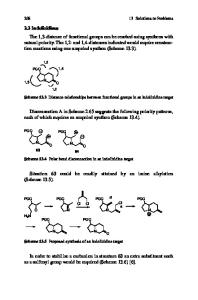Mobile Authentication Problems and Solutions
Mobile Authentication: Problems and Solutions looks at human-to-machine authentication, with a keen focus on the mobile scenario. Human-to-machine authentication is a startlingly complex issue. In the old days of computer security-before 2000, the human c
- PDF / 5,612,912 Bytes
- 121 Pages / 439.37 x 666.142 pts Page_size
- 23 Downloads / 417 Views
Series Editors Stan Zdonik Peng Ning Shashi Shekhar Jonathan Katz Xindong Wu Lakhmi C. Jain David Padua Xuemin Shen Borko Furht V. S. Subrahmanian Martial Hebert Katsushi Ikeuchi Bruno Siciliano
For further volumes: http://www.springer.com/series/10028
Markus Jakobsson
Mobile Authentication Problems and Solutions
123
Markus Jakobsson PayPal San Jose CA, USA
ISSN 2191-5768 ISBN 978-1-4614-4877-8 DOI 10.1007/978-1-4614-4878-5
ISSN 2191-5776 (electronic) ISBN 978-1-4614-4878-5 (eBook)
Springer New York Heidelberg Dordrecht London Library of Congress Control Number: 2012942921 Ó The Author(s) 2013 This work is subject to copyright. All rights are reserved by the Publisher, whether the whole or part of the material is concerned, specifically the rights of translation, reprinting, reuse of illustrations, recitation, broadcasting, reproduction on microfilms or in any other physical way, and transmission or information storage and retrieval, electronic adaptation, computer software, or by similar or dissimilar methodology now known or hereafter developed. Exempted from this legal reservation are brief excerpts in connection with reviews or scholarly analysis or material supplied specifically for the purpose of being entered and executed on a computer system, for exclusive use by the purchaser of the work. Duplication of this publication or parts thereof is permitted only under the provisions of the Copyright Law of the Publisher’s location, in its current version, and permission for use must always be obtained from Springer. Permissions for use may be obtained through RightsLink at the Copyright Clearance Center. Violations are liable to prosecution under the respective Copyright Law. The use of general descriptive names, registered names, trademarks, service marks, etc. in this publication does not imply, even in the absence of a specific statement, that such names are exempt from the relevant protective laws and regulations and therefore free for general use. While the advice and information in this book are believed to be true and accurate at the date of publication, neither the authors nor the editors nor the publisher can accept any legal responsibility for any errors or omissions that may be made. The publisher makes no warranty, express or implied, with respect to the material contained herein. Printed on acid-free paper Springer is part of Springer Science+Business Media (www.springer.com)
For A and Art.
Foreword
“Something you are; something you know; something you have.” – I first heard these words as a graduate student studying computer security technologies and authentication. These three factors are all we have at our disposal to try to correctly identify other human beings. In face-to-face interaction, familiar people use ”something you are” to identify one another such as their facial structure or voices. When driving through an EZPass toll booth, one uses ”something you have” to identify one’s car, so that the appropriate account is billed. And when logging into most websites, users typically
Data Loading...










